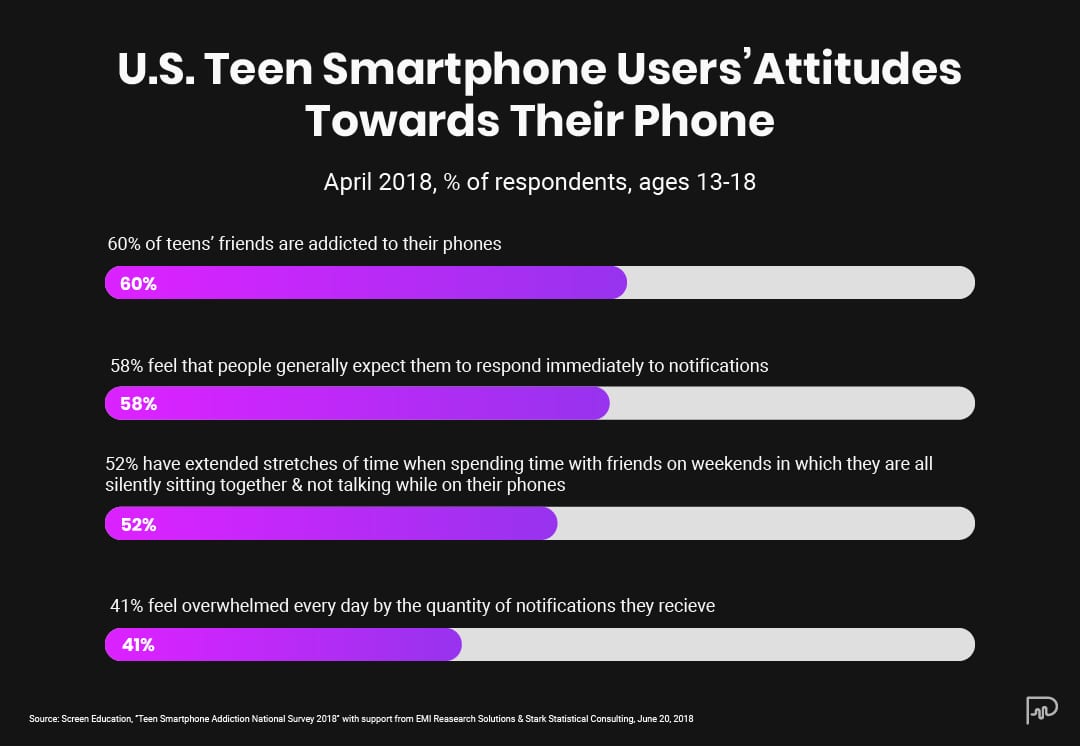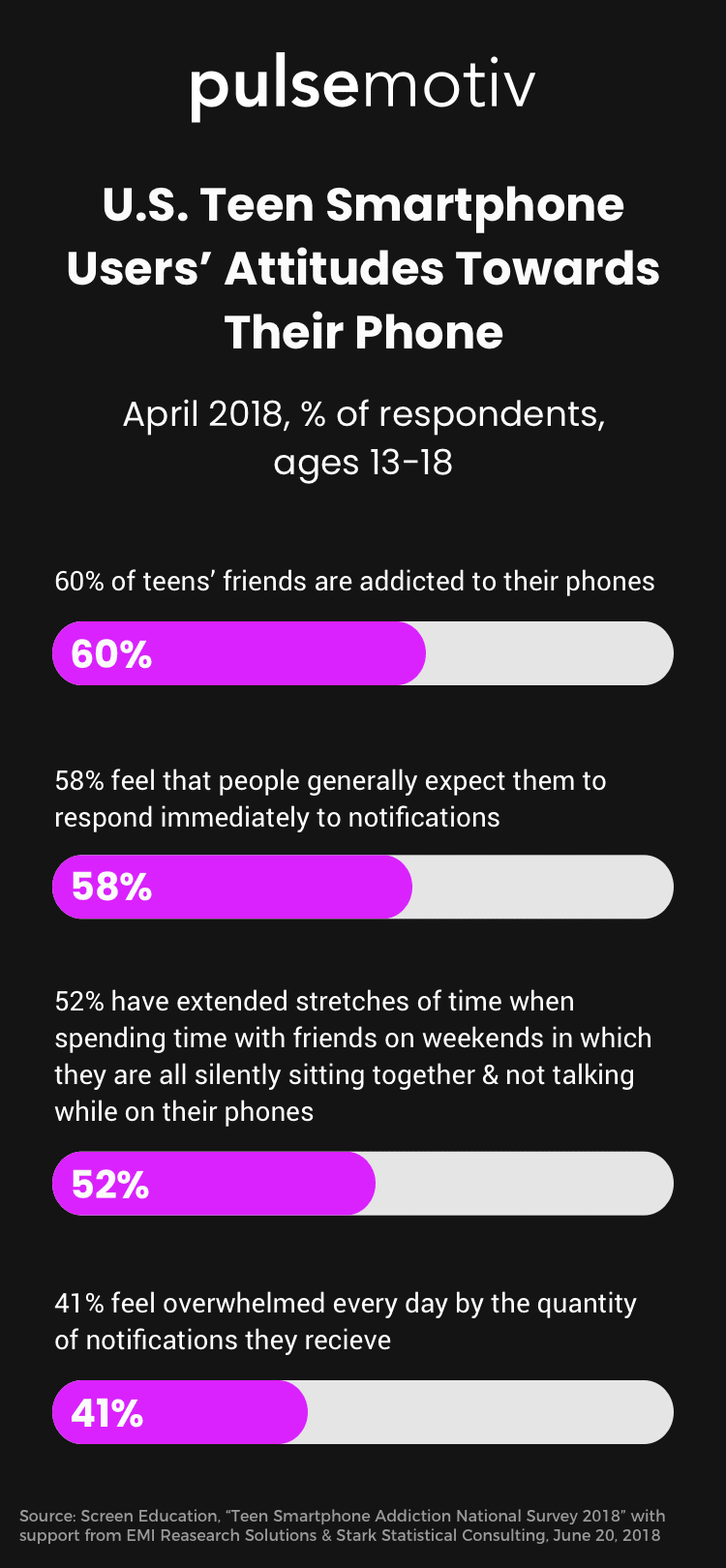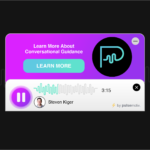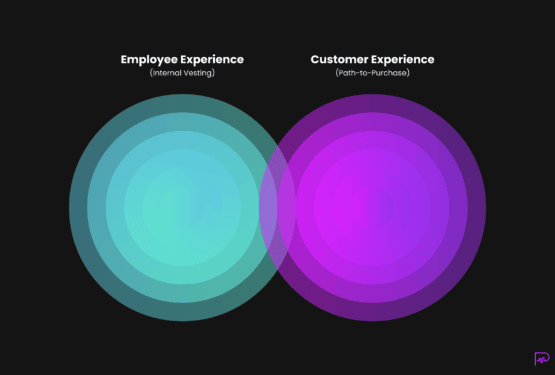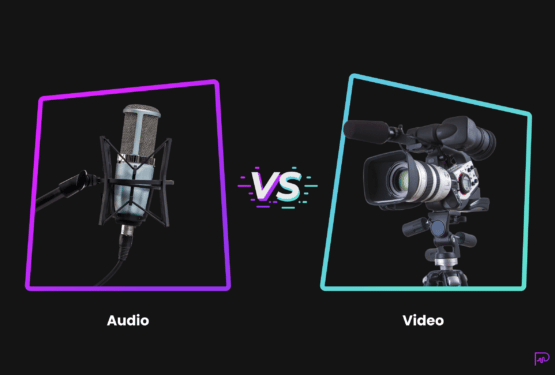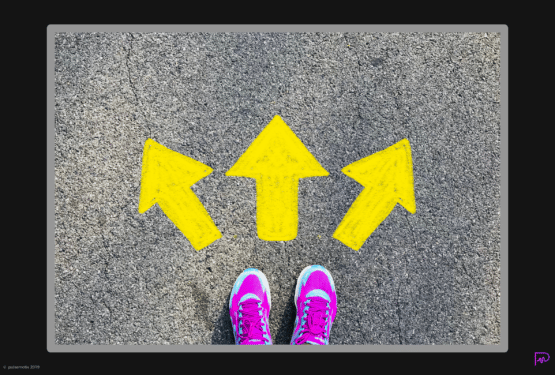Does successful user engagement feel elusive? That’s because the level of distraction consumers face today has made it harder than ever to get people to pay attention — and that attention is the first step in delivering gorgeous user experiences.
It’s true that today’s buyers have unprecedented access to information and stimulation, which on the surface seems like a good thing. More access means more options and increased opportunity to get answers, and engage with others. Contrary to what you might think, though, that increased access has actually been detrimental to the user’s experience. Our behavior as consumers has changed as a result of this instant gratification. Take a look at the love-hate relationship between teens and their smartphones as evidence.
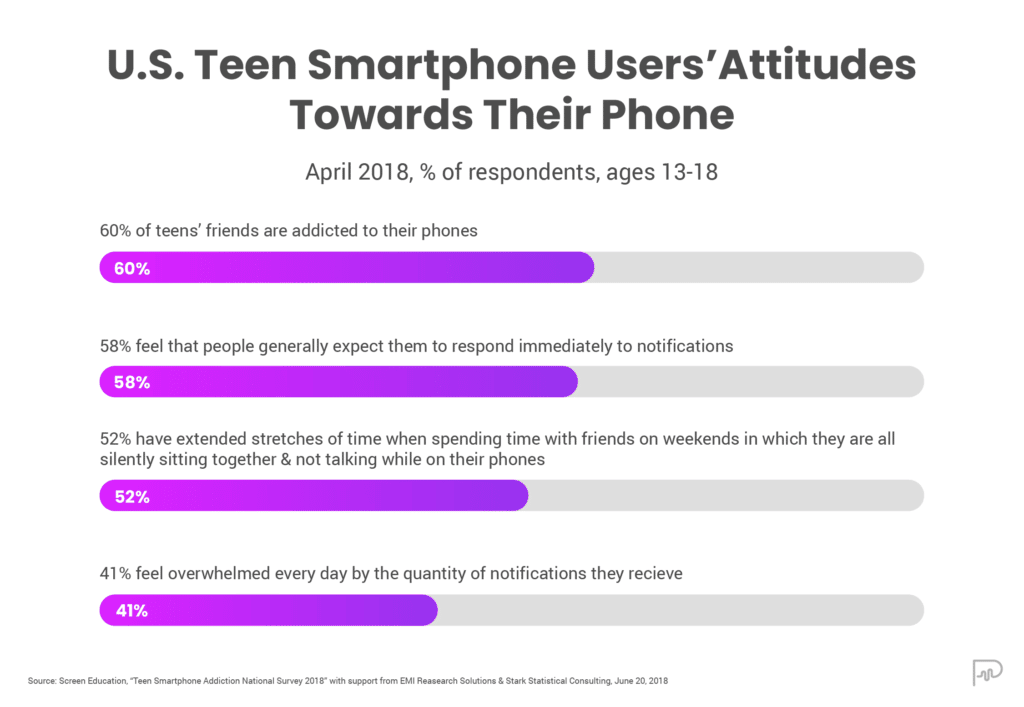
Teens — the first generation to grow up with these devices — feel their friends are addicted to their phones and a sense of urgency to respond to incoming messages. They even spend time in face-to-face situations when their phones are the focal point instead of the other people in the room.
Dr. David Greenfield examined Internet and smartphone addiction, which plagues more of society today than just teens, and its impact on our brain. In doing so, he found evidence that perma-access to our smartphones has actually hampered “our ability to manage and balance time, energy, and attention.” And, as a result, it’s left us in a fragile state.
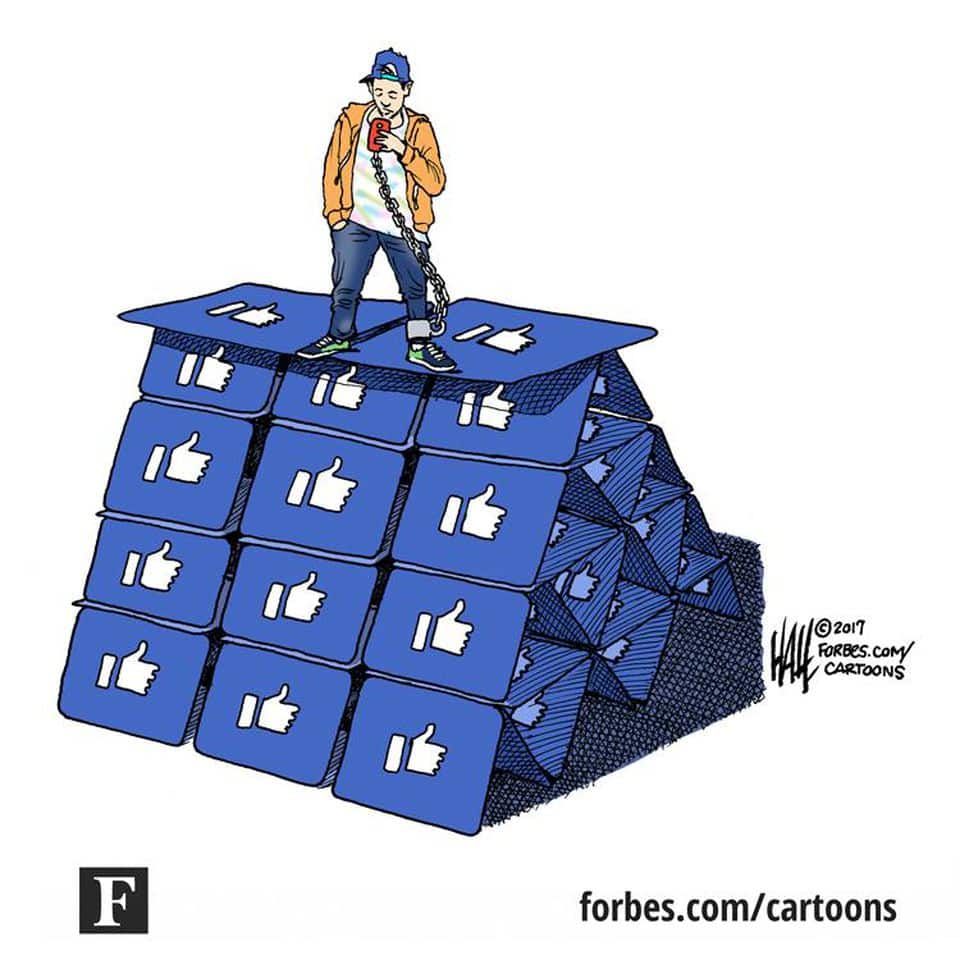
Consider this cartoon by Ed Hall at Forbes depicting America’s smartphone addiction. It accurately shows the balancing act we play by relying on the validation we get from others by way of the notifications we receive around the clock. And that’s the key. Those notifications offer an invitation into an unknown world.
When you open your phone, you never know what you’re going to get. Dr. Greenfield found that notifications actually get us physically excited, triggering a small amount of dopamine (the pleasure hormone) to get released into our brains.
For businesses, that sense of constant intrigue should mean higher engagement levels, right? Not quite. The state of consistent distraction and search for a small dopamine rush is something that’s made it harder than ever to get people to sit down and pay quality attention. We’re constantly on the search for the next high from a notification and external validation. And because it’s become such an immense challenge, businesses have started to place a tremendous amount of time and energy focusing on driving user engagement that satisfy users and keep then interacting with the brand — and they’re doing that through better digital experiences.
User Engagement is Hot, and For Good Reason
The first step to creating a sublime user experience — the kind people eagerly come back to time and again — is to get them immersed in the experience in the first place. But, with the speed of technological evolution, that immersion has proven more difficult than many people anticipated.
If your Apple News feed looks anything like mine, you’ve likely seen the term “digital adoption” out there on at least one occasion. It’s a hot buzzword right now and for good reason. Digital adoption answers one of the biggest challenges of digital transformation — getting organizations to break patterns and actually go through the difficult (but necessary) motions to transform habits by quickly adopting the new tools available.
As valuable as it is, digital adoption isn’t the same as user engagement. Although similar, user engagement is a little more ground-level. Where digital adoption involves organizations embracing the technology that’s available, user engagement is all about getting the people within the organizations to interact with and use specific systems that fill specific needs. To do that requires a sublime user experience that makes a user feel almost as excited as this sugared up little lady to keep them coming back time and time again.
On the surface, developing an experience that gets your user feeling this level of excitement sounds like a no-brainer. The challenge arises when your company shakes up patterns and processes, requiring people shake up learned behavior.
If your business aims to introduce something new to the digital ecosystem, taking an empathetic stance to how your organizations and people use the app is critical. The first step in achieving better empathy as a business is understanding specifically where the pain points are in the adoption process.
The Struggle of User Engagement is Real
The struggle is real when it comes to getting people to try and embrace something new. To successfully engage users in your brand offering requires you to stretch people’s perceptions without exceeding expectations and still keep the experience a delight. That’s not an easy feat.
You have to change people’s perceptions.
Science shows that people make a first impression in a matter of a tenth of a second. Before you can blink your eye, someone has already determined whether you’re trustworthy, successful, or (harsh but true) worth their time.
Fortunately for organizations, lasting impressions take slightly longer to form. Businesses have 7 seconds to make a first impression. Whether that first impression is accurate or not, people see a product and make snap judgments about whether or not it’ll fit their needs. If in those 7 seconds, you haven’t empathized with the end user’s needs and shown them how you will solve their pain points, you’ll immediately be faced with an uphill battle to get your users to care enough to engage.
You’ll be tasked with the lofty goal of changing perceptions from the get go. You’ll need to demonstrate how your technology can empower them to do their jobs better than before. You’ll have to redefine their processes and prove why yours is better. That altered perception takes a lot of heavy lifting and user guidance to get right.
You have to set expectations.
Often, new tools and solutions are put in front of a person without any real insight into what to expect as they dive in. The person’s then left scratching their head wondering, “what’s in it for me?” That’s the worst question they can ask because it can lead to two catastrophic scenarios:
- They’ll doubt whether the solution is worthwhile and avoid spending time with the product or service.
- They’ll ratchet up expectations in their mind and when they realize that it’s not all they cracked it up to be, they’ll churn.
The happy medium between these two schools of thought is the middle ground where expectations are high and easily met by engaging with the product. It’s up to you to define what the outcomes look like so your users know what to expect as soon as they dive in and throughout the set up and learning process.
Driving User Engagement Correlates With the User Experience
People tend to shy away from new tools and technology out of fear. More specifically, they fear they lack the skills to adopt innovative solutions. It’s easier to revert back to an experience that’s familiar rather than dive into the unknown and risk embarrassing yourself by struggling to embrace something innovative and new.
To give your audience a reason to push their perceived personal limits enough to give engagement with your business a shot, the experience needs to be more than worthwhile. The experience needs to be valuable, enjoyable, and ideally, fun.
One company that does this well is Stitch Fix. Stitch Fix turned the traditional retail industry on its side with a clothing subscription service. Users would subscribe, pay a styling fee, and then get clothes by mail to try on in the comfort of their own home. In theory, the process was easy and straightforward. In practice, users had to see more value before diving in head first, and put in the time and effort to fill out the survey. To deliver that value, Stitch Fix built a game called Style Shuffle to make the experience fun and engaging. Here’s what it looks like in app.
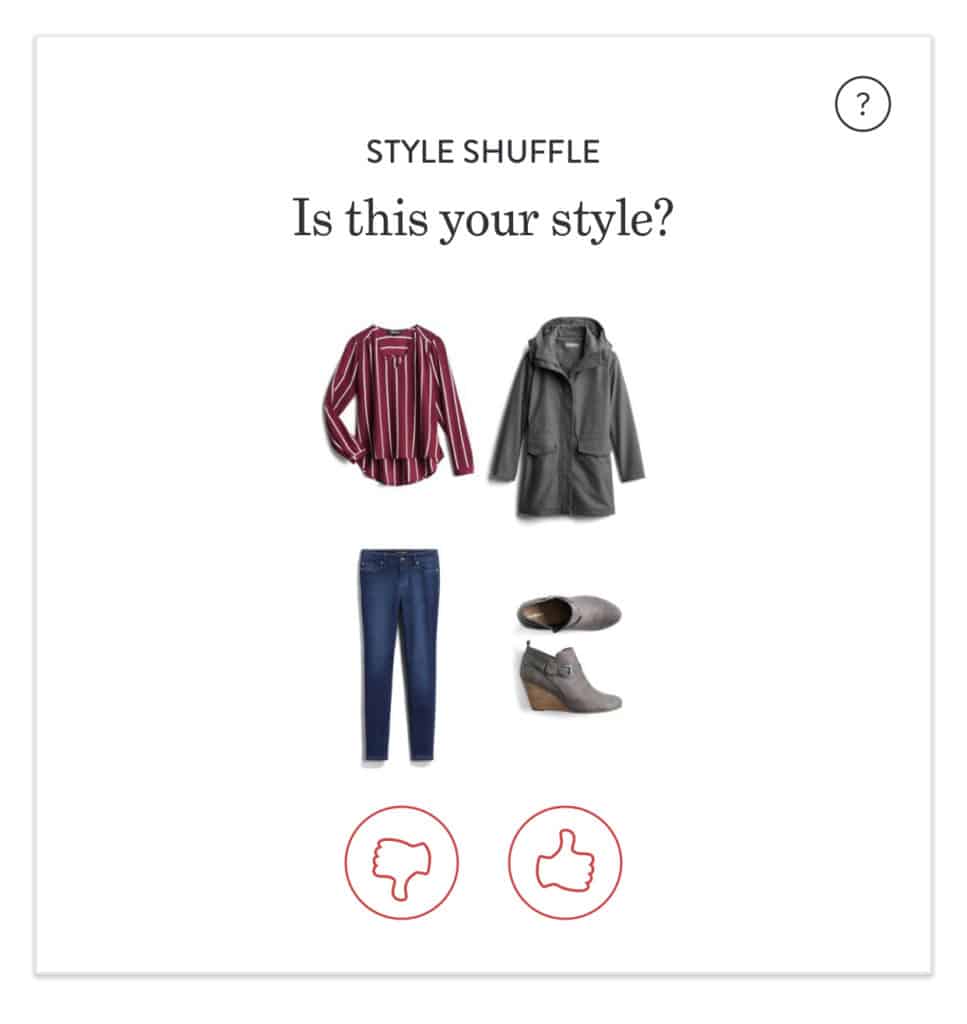
In the Style Shuffle game, Stitch Fix lets users give a thumbs up or a thumbs down to certain pieces of clothing. The experience feels more like a game — so much so that users come back regularly to rate new styles. Some have called this one element Stitch Fix’s secret weapon. And, on a 2018 earnings call, chief operating officer Mike Smith reported that the game yielded, “higher client engagement and satisfaction among the clients who use this game.”
By dangling an enticing experience in front of your users to give them a reason to engage with your product or service. The reason Stitch Fix’s game is so effective is that it’s fun and it gives the end user better results with better matched clothing in their boxes. As the user not only enjoys the process, but begins to see the benefits, they’ll move from a trot to a gallop while engaging further and further with your product.
Successful user engagement happens when you’ve made a strong first impression, you’ve set expectations, and you’ve made the experience fun.
Achieving Successful User Engagement
Here’s the good news. With so many new tools and processes out there today, your customer is becoming more used to fast changes, so you innovation won’t be lost on them. But here’s the bad news. Your customers suffer from the shiny object syndrome. Each time someone releases a new feature, they’re whiplashed over to check it out. Instead of engaging with you, they’re back to engaging with your competitor because the experience they deliver is more satisfying.
By deploying a few strategic methods for achieving successful user engagement (we’ve got seven here for you), you can kickstart the process of developing a better experience and in turn get people excited to get plugged in with you.
1. Communicate Across a Variety of Mediums
It’s standard practice to send funnels filled with emails to users in an effort to get them engaged with a product. Although useful, emails only serve as one form of communication — an expected form. Doing the bare minimum of what’s expected is yawn-inducing at best.
If your user is far from achieving inbox zero (and let’s face it, most of us are), you’ll have a harder time cutting through that clutter with yet another email to muddle through. To stand out and differentiate your experience from the pack, improve your communication style by incorporating a variety of mediums.
- Send your user to a landing page where you can use conversational guidance paired with web audio to drive your user to the ace of hearts in your product.
- Build a YouTube channel and fill it with videos showcasing your product in action.
- Distribute your content on social media to show up where your users spend the bulk of their time.
The more ways and the more often you communicate with your user, the better the chances you’ll have of getting their attention and getting them engaged. Focus not only on what needs to happen but also why it matters. Taking this approach will give your audience a reason to pay attention and plug in.
2. Get Key Influencers On Your Side
Managers aren’t the only people with influence in your user’s lives. There are many other influencers within their network. By getting these people plugged into your product, you can build that social proofing that it’s worth the effort to engage with you.
But it’s not enough to tell a person who’s involved. Showing them how the influencers are using the product tells a much stronger story. Here’s how we’ve approached this with Pulsemotiv. By using our customer’s wins as case studies, highlighting customers in various cohorts, and sharing wins on social media, we’ve made it easier to understand exactly what the experience looks like when a business or person engages with us. Seeing these wins lets our users experience the potential outcomes by engaging with the product.
3. Get Managerial Buy-In First
A surefire way to get your user to avoid engaging with your product as part of their workflow is to have her boss tell her to focus her efforts elsewhere. Managers and directors need to be on board with the type of experience you’re creating.
Give your user the courtesy of making it easy for them to get organizational buy-in—give them plenty of fodder to send to their managers to get them on board early on. Instead of feeling fearful of asking to be a part of your business, they’ll feel prideful walking into their managers office and presenting what you have to offer.
4. Hold One-on-One Trainings At Scale
No matter how friendly and intuitive your product is, one-on-one trainings can make the experience feel more inviting. But, one-on-one trainings aren’t always possible or realistic.
With conversational guidance, you can take this same one-on-one feeling and guide the person through the onboarding process. Here’s how it works:
- Set up a series of landing pages that showcase the logical steps a person needs to take to get set up with your business.
- Speak directly to your customer using a conversational tone to establish trust and make the experience feel like a one-on-one training session.
- Guide the user from one stage in your training to the next, so they know exactly where to go and what comes next.
Using a trustworthy human voice paired with a deliberate, well thought out approach will go a long way to overcoming some of the biggest challenges listed above.
5. Don’t Stop at Onboarding
Even if you’ve followed all of the necessary onboarding hacks to guide your users to the most important areas of your product, your users might not absorb everything they need to know up front. They will need consistent support and resources to remain engaged for the long haul.
By offering unencumbered access to further training materials, videos, and guides, you can help your users stay engaged with your product days, weeks, months, and even years down the road. Check out our YouTube channel for just one example of the type of resource we offer to our users to continually offer fresh ideas and fresh takes on how to use Pulsemotiv.
6. Open the Lines of Communication
User engagement shouldn’t feel like a one way street. Until now I’ve talked about ways you can nudge your user into embracing your product via a better experience. But today’s consumers like they’re taking part in something rather than being lectured to. They want to be able to shape their experience and have a say in how it all fleshes out.
Bring a feeling of empowerment to your product by opening a feedback loop for your users. Invite them to share where friction occurs and changes they’d like to see made. Although you might not be able to (or want to) instantaneously adopt all of the ideas, tracking your users wants and needs will help you drive future iterations and innovations on your product. And, when the user feels like they have a voice among your brand, they feel more invested as a contributor and their experience improves overall.
7. Follow the K.I.S.S. Method
People are fascinated by the complex. We tune into cooking shows to watch Master Chefs at work. We read books to understand details about the human brain, business processes, and other complex tasks. We even look at animal brains to get a better understanding of our earth’s complex ecosystem. Still, when it comes to our habits, workflows, and digital interactions, we aim to keep things as clean and efficient as possible. The natural tendency to analyze processes to eliminate any wasted action will fly in the face of your user’s experience unless you keep things simple.
Part of providing a quality experience is putting users through a process that feels good and doesn’t waste their time or bombard them with overwhelming a layers of complexity. That’s because the world around us is chaotic enough. Simplicity is a powerful method for getting people to act and if your product is tedious and burdensome, people will churn. But, if it’s easy and makes their current processes more efficient, your users will be able to see the benefits early and often, keeping them engaged for the long run.
Cutting Through the Distractions
Digital distraction is a real phenomenon and has changed the fabric of how we engage with the world around us. Although it’s empowered us to find answers and connect across the miles, virtual addictions have dampened our ability to balance time, energy, and attention.
As mentioned earlier, you have a mere 7 seconds to form a first impression and an overload of digital distractions competing for your user’s attention. Having a plan for how to drive successful user engagement is critical. That plan must start with developing a strategic user experience that gets your buyers a better reason to spend time with your product or service.

